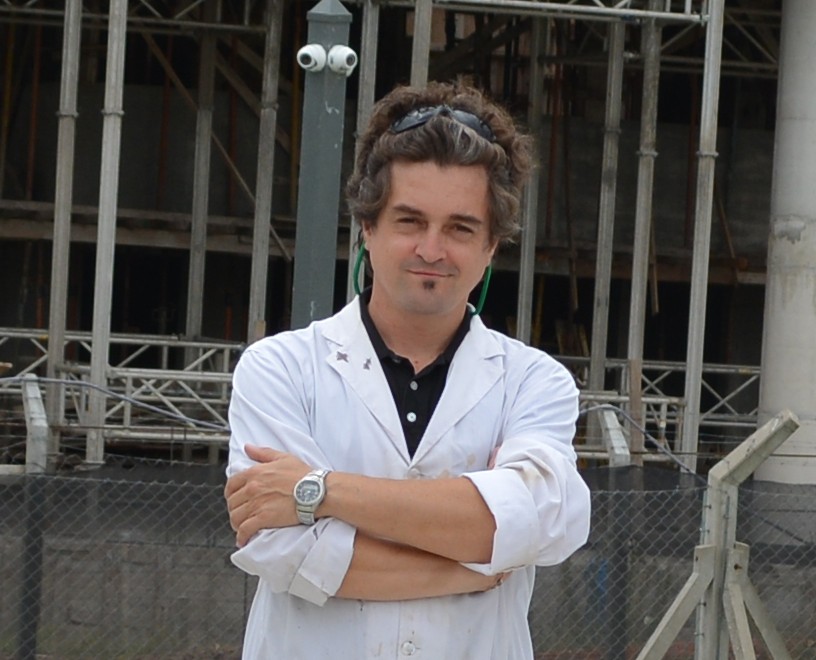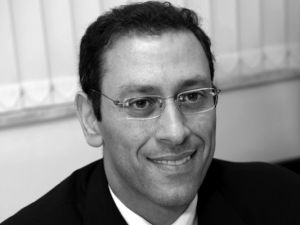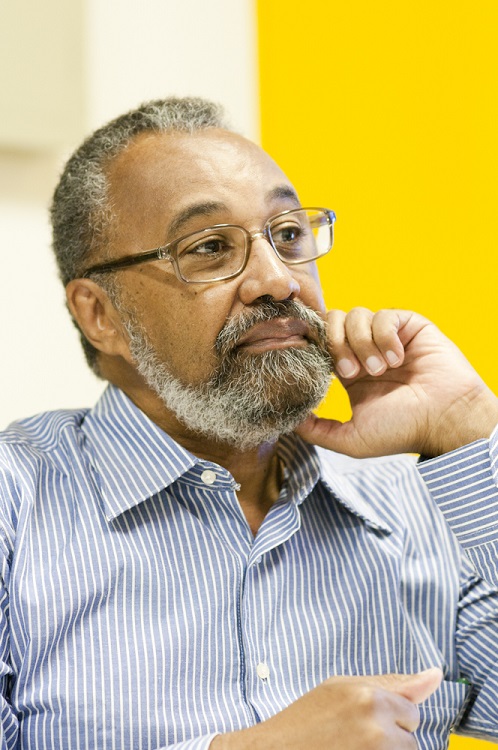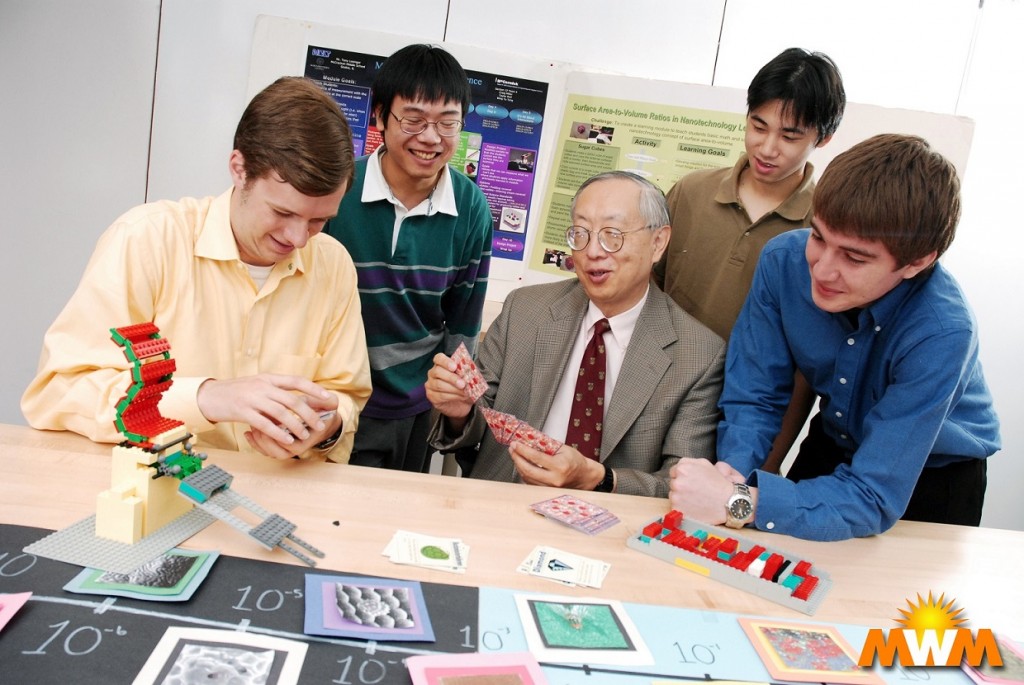
How many scientific vocations were aroused, and how many domestic accidents were caused, by experimental chemistry games for children (which until some time ago did not follow all the toy safety standards)? The Argentine scientist Galo Juan de Ávila Arturo Soler Illia belongs to this group. He remembers that his interest in science lit up (literally) with a small fire caused by a chemistry lab set in his parents’ home – two lawyers, members of the Radical Civic Union, that was also the party of Galo Soler Illia’s grandfather, President Arturo Umberto Illia, who ruled Argentina from 1963 to 1966, until undergoing a coup.
Today, Galo Soler Illia can be considered one of the best known researchers in the Brazil´s neighboring country, both in the scientific community (he is among the 30 Argentine scientists best positioned in Google Scholar for the citations to his works, and has also received the top national science awards) and among the lay public (in the field of Nanotechnology, he is a very active and didactic presenter in all the media, and is usually an information source for Argentine journalists).
Galo Soler Illia was born in Buenos Aires on May 31, 1970. He completed his primary studies in a private constructivist school, Bayard College. In 1983, he enrolled in the National School of Buenos Aires, a public institution dependent on the University of Buenos Aires (UBA), which among other things was characterized by a high study demand, a wealth of extracurricular activities and better-quality infrastructure than other public schools. In 1988, he graduated from the college with a specialization in Sciences. Both in primary and secondary education he had the opportunity to carry out activities in science labs.
In 1989, Soler Illia began to study in a Chemistry Sciences course at UBA. During the undergraduate course, he began teaching in the Department of Physical, Analytical and Inorganic Chemistry of UBA and doing research in a group of Materials Chemistry and also in a laboratory set up in the house of a friend. In 1993, he obtained a bachelor’s degree in Chemistry, with a grade point average of 9.13 / 10.
From 1994 to 1998, Soler Illia completed his doctorate in Chemistry, also at UBA, under the guidance of Professor Miguel Angel Blesa. Through research on nanoparticles of mixed metal hydroxides, he generated knowledge about the complex mechanism of particle formation, which would be very useful in his research as a postdoc and as a professional researcher, focused on the synthesis of materials with high control of their characteristics. Concomitantly to the doctorate, he continued to teach, as an assistant, at UBA.
In 1999, he moved to France, together with his wife Astrid Grotewold, also a chemist, and remained there until 2002. Soler Illia did postdoctoral studies at the Université Pierre et Marie Curie (Paris), under the supervision of Dr. Clément Sanchez, with a 2-year scholarship from CONICET, the main Argentine entity in support of science and technology. In the post-doc, Soler Illia developed methods to produce highly controlled porosity materials. This period resulted in Soler Illia’s most cited articles so far, with more than 1,800 citations in one of the papers, according to Google Scholar. At the end of his stay in France, Soler Illia also worked on applications of mesoporous thin films for the research and development center of the company Saint Gobain.
Galo Soler Illia returned to Argentina in early 2003, at a time when the country was ending great political instability, which caused the Presidency of the Republic to appoint 5 different people in just 11 days. In addition, the country was still under the effects of the severe economic crisis that had reached its peak in 2001. However, Soler Illia was quickly able to enter the research career at CONICET, working at the National Atomic Energy Commission (CNEA) and without wasting time, founded the Chemistry Group of Nanomaterials, which to date operates in the design and development of nanostructured materials. In 2004, the scientist became a professor of UBA in the department where he studied for his bachelor’s degree and doctorate.
In early 2015, Illia became director of the Institute of Nanosystems (INS) of the National University of San Martín, located in the metropolitan area of Buenos Aires. The INS is defined as a space for nanoscience and nanotechnology research, development and creation, whose ultimate goal is to solve priority problems of industry and society in general. At the institute, Soler Illia has a multidisciplinary scientific team of 4 researchers (4 more in 2017), 6 graduate and post-doc students and 1 laboratory technician, and also a management team of 6 professionals.
Currently, in addition to being director of INS, Galo Soler Illia is principal researcher of CONICET and associate professor at UBA. He is a member of advisory boards at the Argentinean Nanotechnology Foundation (FAN) and at the Brazilian National Synchrotron Light Laboratory, and also a member of the editorial board of the Journal of Sol-Gel Science and Technology (Springer). Moreover, Soler Illia has a scientific dissemination column on Nanotechnology in a television broadcast program called “Scientists Made in Argentina”, which airs once a week on the Argentine public channel. Finally, Soler Illia has just been appointed (November of this year) as member of the Argentine Presidential Council 2030, composed of intellectuals from various fields to advise the president of Argentina, Mauricio Macri.
Soler Illia, whose h-index is 44, has produced over 120 papers published in international scientific journals, with about 11,000 citations, according to Google Scholar. He has supervised 7 completed PhD theses and is the author of 2 dissemination books on nanotechnology. He is also the author of 4 patent applications.
His work was recognized with a series of awards for science, technology, innovation and scientific popularization, among them the main Argentinean awards, like Houssay Award (2006 and 2009), from the Secretary and later Ministry of Science and Technology; the KONEX Award (2013) from the eponymous foundation and the Innovar Award (2011 and 2016) from the Ministry of Science, Technology and Productive Innovation. He also received distinctions from the National Academy of Exact Sciences, FAN, Argentinean Association of Physicochemical Research, CONICET, BGH and Dupont companies, among others. In May of this year, Galo Soler Illia was appointed titular scholar of the Argentinean National Academy of Exact Sciences, Physics and Natural Sciences, a select group of only 36 scientists.
Here’s an interview with the Argentine scientist.
SBPMat newsletter: Tell us why you became a scientist and work in the field of materials.
Galo Soler Illia: I always liked Chemistry. This started when I received a chemistry game, I was five years old, and while experimenting with it I burned my parent`s dinner table. Later, during my high school studies I was a bit of a nerd, writing software code for physics classes at my school. Writing code aroused my curiosity to know how things worked and how problems could be solved. I learned a lot. Near the end of secondary education, I decided to study Chemistry because I believed it was a very versatile and wonderful course that had great possibilities in many fields. At that time, I was really interested in Biotechnology, which was a new area. At the time I started my undergraduate studies at the University of Buenos Aires (UBA), the area of Materials Chemistry had began to emerge. Still a student, I began teaching as an assistant in the Department of Inorganic, Analytical Chemistry and Physical Chemistry of the Faculty of Exact and Natural Sciences, inspired by the example of young and enthusiastic teachers who were returning from abroad and who propagated an atmosphere of work and demand. Together with my best friends, we set up a laboratory on the terrace of one of my friend’s home. There we grew crystals and planned molecule synthesis. Since we spent all day at university and had some spare time, I found a place to work, without a salary or scholarship, in a Materials Chemistry group that had just begun. Everything was very fast, and before I noticed it I had finished my undergraduate studies and began my doctorate, manufacturing microparticles for catalysts. It was a beautiful time of my life, a time from which I still retain my innate curiosity, my willingness to explore and build materials and a wonderful group of friends, who have become outstanding colleagues now spread out throughout the world.
SBPMat newsletter: In your opinion, what are your main contributions to the Materials area, considering all aspects of your scientific activity?
Galo Soler Illia: I have always been interested in building materials, in the chemist’s task to join atom with atom, to manufacture new architectures. I focused on understanding the physicochemical phenomena that take place during the production of a material. When you know and understand these processes, you go from simply “preparing” a material to being able to design it and synthesize it, however complex it may be. And we can take advantage of the properties of the chemical elements to obtain the properties we desire. I’ll give three examples. In my thesis, I studied the precipitation and aggregation of nanoparticles of mixed metal hydroxides, precursors of catalysts. We discovered a very interesting world and were able to contribute to understanding the complexity behind a dynamic particle formation mechanism: the effects of particle shape and structure, the importance of metals coordination in the formation of a mixed phase, the evolution of surface charge and its effect on the stability of a colloid and much more, which helped me in the future as a solid basis for my research. I was fortunate to be able to work with Miguel Blesa, Alberto Regazzoni and Roberto Candal, three excellent Masters who guided me, stimulated and corrected me.
In my second phase, I worked in Paris in the laboratory of Clément Sanchez. I used what I had learned in order to develop methods to produce highly controlled porosity materials, known as organized mesoporous materials. Again, I became interested in the materials formation mechanisms, which are complex because they require controlling the growth of small inorganic species and their self-assembling with micelles. It is a small physical-chemical symphony, which one must learn to play. We had to use, develop and combine many characterization techniques to understand the phenomena taking place and how they controlled the formation and organization of pore systems, the stability and crystallinity of materials, which among others are important variables in the final performance of these solids.
In my third phase, back in Argentina, I set up a research group at the National Atomic Energy Commission in Buenos Aires, and devoted myself to building more complex architectures based on everything I had learned. My best contributions in this regard refer to the use of forces and interactions at the nanoscale to manufacture many different nanocomposites with designed and surprising optical and catalytic properties. All this required new laboratories, training human resources and the transfer of basic science to technologies. Particularly, over the last years we have worked with companies and aspire to generate nanotechnology in Argentina, extending the knowledge of our laboratory to society.
SBPMat newsletter: Briefly tell us about your interaction with Brazil. Do you come here often for collaborations, events, use of labs, seminars? Have you worked with Brazilian groups or in Brazilian laboratories?
Galo Soler Illia: I returned to Argentina in 2003 and I knew right away about what was being developed in Brazil. Since that time, I began developing projects at the National Laboratory of Synchrotron Light (LNLS), which is a beacon for all those who work in Materials in Latin America. The interaction with the synchrotron staff was very important for us to be able to characterize our materials, and we are amazed to see how the installations have improved over the years. A few months ago I had the opportunity to visit the Sirius building, which is simply stunning and which will be a world reference. I also had the opportunity to visit several universities, teaching courses and collaborating in the education of undergraduate and postgraduate students. Furthermore, we created the School of Materials Synthesis in Buenos Aires, which will have its eighth edition in 2017. This school was designed to generate a community of Latin American scientists qualified with skills in the rational synthesis of materials. We started with many Brazilian students, thanks to the support of the Argentinean-Brazilian Nanotechnology Society, which unfortunately has stopped working. It is truly beautiful to see how students from both countries work together in the laboratories and discuss and present their work in “portunhol” [hybrid mixture of Spanish-Portuguese]. From this school, and with the help of several colleagues, collaborative networks are emerging that will undoubtedly provide us with the technological base for larger joint ventures. I travel to Brazil several times a year and always admire the strength of the country to boost local technological development. I hope that after these difficult times, we may continue growing together.
SBPMat newsletter: We always ask the guest being interviewed in this section to leave a message for the readers who are beginning their scientific careers. What would you say to these junior scientists?
Galo Soler Illia: Looking back, I have three recommendations to young scientists. One is to never lose your imagination and your ability to ask questions; the second is to work hard to find the answers, and the third is to make use of the surprises. Sometimes, we train to develop a path and a strategy and we focus on the rigor to demonstrate and formalize what we find. However, it is crucial to know that this path is full of interesting nooks and turns, and sometimes an aspect we hadn’t taken into account opens up a new and unexplored landscape. Newton said that we, scientists, are sometimes like children on the beach, we find a shell that is prettier than the others and we are happy, but there lies before us the vast ocean of truth. My advice is to continually seek our shells, enjoy them and let us come within reach of understanding the wonders of our universe. And always keep in mind that developing science in our continent is a beautiful challenge that will add richness to our countries and well-being to our brothers.




